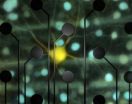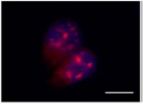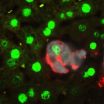(Press-News.org) TORONTO, June 5, 2014 – From 2006 to 2008, nearly 75 per cent of Ontarians with diabetes did not receive all of the tests recommended to properly monitor their disease. How their doctor was paid was one of the factors determining the care they received, according to a study by researchers at St. Michael's Hospital and the Institute for Clinical Evaluative Sciences (ICES).
The study, published today in the Canadian Journal of Diabetes, found that patients who were not actively enrolled with a family doctor were least likely to receive optimum diabetes care. The researchers found that more than 200,000 Ontarians with diabetes were not formally enrolled with a family doctor – either because they didn't have a family doctor or because their doctor practiced in a traditional fee-for-service model.
Over the last decade, in an effort to improve Ontarians' access to family doctors and provide more timely care, the province began implementing different payment models for physicians. Traditionally, family doctors in Ontario were paid a fee for each service they provided, billing OHIP for each patient visit. In newer models, doctors' pay is more complicated – a combination of fee-for-service payment and a lump sum payment for every patient enrolled in their practice. Many doctors now receive the majority of their pay through a lump sum payment per patient, called capitation. All new models emphasize formally enrolling patients with a family doctor or group of doctors.
"When it comes to diabetes, not all Ontarians are getting equal care," said lead author Dr. Tara Kiran, a family physician and an associate scientist in the Li Ka Shing Knowledge Institute of St. Michael's Hospital. "Ontarians whose doctors are paid a lump sum per patient are more likely to get the diabetes tests they need. Lump sum funding gives family physicians the flexibility to spend more time with complex patients, collaborate with other professionals, and integrate email and phone calls into their practices."
Ontario has transitioned 40 per cent of its family physicians to capitation models in the hopes of improving quality of care and reducing costs. Capitation models require evening and weekend clinics, formally enrol patients, and have incentive payments to physicians for immunizations, cancer screening, smoking cessation and management of chronic diseases such as diabetes. The still-existing and traditional physician payment model pays doctors a fee for each service they provide and does not require evening and weekend clinics or include the additional step of formal enrolment.
Because the study looked at one point in time, more research is needed to see if new payment models caused improvements in care over time or if higher-performing physicians were the doctors to join the newer payment models.
The Canadian Diabetes Association's clinical practice guidelines recommend that over the course of two years patients with diabetes undergo four HbA1C laboratory tests to measure blood sugar control, two cholesterol tests and a retinal eye exam. Researchers defined optimum diabetes care as receiving all three types of testing at the recommended intervals.
Researchers analyzed data for 757,928 people with Type 1 and Type 2 diabetes who were aged 40 or older – approximately 12 per cent of Ontario's population.
Between 2006 and 2008
Sixty-eight per cent of Ontarians with diabetes received one or more retinal eye exams
Seventy-eight per cent of Ontarians with diabetes underwent at least one HbA1C laboratory test to measure blood sugar control and 37 percent had four or more tests, as recommended
Eighty per cent of Ontarians with diabetes received at least one cholesterol test and 59 per cent received the optimal two cholesterol tests.
"Limited access to good primary care can lead to poor management of chronic diseases, fragmented care through walk-in clinics, and overburdened emergency departments," said Dr. Rick Glazier, a senior scientist at ICES and research director in the Department of Family and Community Medicine of St. Michael's Hospital.
The authors suggest that intensifying patient outreach, improving physician education, encouraging enrolment, and making efforts to remove barriers to care may reduce this care gap.
INFORMATION:
About ICES:
ICES is an independent, non-profit organization that uses population-based health information to produce knowledge on a broad range of health care issues. Our unbiased evidence provides measures of health system performance, a clearer understanding of the shifting health care needs of Ontarians, and a stimulus for discussion of practical solutions to optimize scarce resources. ICES knowledge is highly regarded in Canada and abroad, and is widely used by government, hospitals, planners, and practitioners to make decisions about care delivery and to develop policy. For the latest ICES news, follow us on Twitter: @ICESOntario
About St. Michael's Hospital:
St. Michael's Hospital provides compassionate care to all who enter its doors. The hospital also provides outstanding medical education to future health care professionals in 27 academic disciplines. Critical care and trauma, heart disease, neurosurgery, diabetes, cancer care, care of the homeless and global health are among the Hospital's recognized areas of expertise. Through the Keenan Research Centre and the Li Ka Shing International Healthcare Education Centre, which make up the Li Ka Shing Knowledge Institute, research and education at St. Michael's Hospital are recognized and make an impact around the world. Founded in 1892, the hospital is fully affiliated with the University of Toronto.
Media contacts:
Geoff Koehler
Media Relations Adviser
St. Michael's Hospital
koehlerg@smh.ca
416-864-6060, ext. 6537
Deborah Creatura
Media Advisor
ICES
deborah.creatura@ices.on.ca
(o) 416-480-4780 or (c) 647-406-5996
Diabetes care depends on how your doctor is paid
2014-06-05
ELSE PRESS RELEASES FROM THIS DATE:
New method reveals single protein interaction key to embryonic stem cell differentiation
2014-06-05
Proteins are responsible for the vast majority of the cellular functions that shape life, but like guests at a crowded dinner party, they interact transiently and in complex networks, making it difficult to determine which specific interactions are most important.
Now, researchers from the University of Chicago have pioneered a new technique to simplify the study of protein networks and identify the importance of individual protein interactions. By designing synthetic proteins that can only interact with a pre-determined partner, and introducing them into cells, the team ...
Research helps clarify how obesity leads to type 2 diabetes, cancer
2014-06-05
New findings about the biological links between obesity, insulin resistance and type 2 diabetes may also shed light on the connection between obesity and cancer, says a scientist at The University of Texas at Dallas.
In a study published online June 5 in the journal Cell, UT Dallas' Dr. Jung-whan (Jay) Kim and colleagues at the University of California, San Diego found that a protein called HIF-1 alpha plays a key role in the development of insulin resistance and type 2 diabetes in obese mice.
The researchers genetically engineered mice to lack the HIF-1 alpha protein ...
New research explains how we use the GPS inside our brain to navigate
2014-06-05
The way we navigate from A to B is controlled by two brain regions which track the distance to our destination, according to new research funded by the Wellcome Trust and published in Current Biology.
The study found that at the beginning of a journey, one region of the brain calculates the straight-line to the destination ('the distance as a crow flies'), but during travel a different area of the brain computes the precise distance along the path to get there.
The findings pinpoint the precise brain regions used and in doing so change how scientists believed we use ...
Our own treacherous immune genes can cause cancer after viral infection
2014-06-05
HPV (human papillomavirus) infection is widely known to induce cancer. Many of the mutations that cause this virally-induced cancer are caused by a family of genes that normally combats viral infections, finds new UCL (University College London) research.
This raises the possibility of developing drugs to regulate the activity of these genes to prevent HPV-associated cancers from developing and reduce the ability of existing cancers to evolve resistance to treatments.
The research, published in Cell Reports, shows for the first time that genes from the 'APOBEC' family, ...
Cellular traffic control system mapped for the first time
2014-06-05
Cells must transport nutrients and messenger cargos through its membrane and transport them within the cell at the correct time and place. This procedure is complex and is regulated with the help of specific genes. If disturbances in the transport mechanism arise, severe diseases, such as diabetes, cancer and diverse neurological pathologies, are the consequence. The discovery of the molecular principles of cellular transport was honored with the Nobel Prize of physiology and medicine in 2013. While knowing the intracellular roads and the functioning of the cars that use ...
Unmasking viral invaders
2014-06-05
If you have it, you probably don't know it. Cytomegalovirus, or CMV, is perhaps one of the biggest pathogens you've never heard of—big, both proportionately and epidemiologically. It contains approximately 200 genes, compared to HIV's paltry 18, and it's everywhere. You can catch it as a preschooler salivating over blocks, or as a teenager experiencing your first kiss. Once you have it, you have it for life.
Good news: If you're healthy, it's harmless. Your T cells keep it in check, and you'll be none the wiser.
Bad news: If you have any medical condition that dampens ...
Making artificial vision look more natural
2014-06-05
In laboratory tests, researchers have used electrical stimulation of retinal cells to produce the same patterns of activity that occur when the retina sees a moving object. Although more work remains, this is a step toward restoring natural, high-fidelity vision to blind people, the researchers say. The work was funded in part by the National Institutes of Health.
Just 20 years ago, bionic vision was more a science fiction cliché than a realistic medical goal. But in the past few years, the first artificial vision technology has come on the market in the United States ...
Discovered a new way to control genetic material altered in cancer
2014-06-05
When we talk about genetic material, we are usually referring to the DNA (deoxyribonucleic acid) that we inherit from our parents. This DNA is the factory where is built a similar molecule called RNA (ribonucleic acid) which produces our proteins, such as hemoglobin or insulin , allowing the lives of our cells. But there is a special group called non-coding RNA that has a more enigmatic function.
The best known is microRNAs, tiny molecules that are responsible for turning on or off our genome like an electrical current switch. Today, an article published in the prestigious ...
A new model of liver regeneration
2014-06-05
Harvard Stem Cell Institute scientists at Boston Children's Hospital have new evidence in mice that it may be possible to repair a chronically diseased liver by forcing mature liver cells to revert back to a stem cell-like state.
The researchers, led by Fernando Camargo, PhD, happened upon this discovery while investigating whether a biochemical cascade called Hippo, which controls how big the liver grows, also affects cell fate. The unexpected answer, published in the journal Cell, is that switching off the Hippo-signaling pathway in mature liver cells generates very ...
Vanderbilt scientists discover that chemical element bromine is essential to human life
2014-06-05
Twenty-seven chemical elements are considered to be essential for human life.
Now there is a 28th – bromine.
In a paper published Thursday by the journal Cell, Vanderbilt University researchers establish for the first time that bromine, among the 92 naturally-occurring chemical elements in the universe, is the 28th element essential for tissue development in all animals, from primitive sea creatures to humans.
"Without bromine, there are no animals. That's the discovery," said Billy Hudson, Ph.D., the paper's senior author and Elliott V. Newman Professor of Medicine.
The ...



